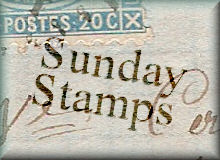"The Workers' Tale "stamps were issued in 1999 as part of the Millennium Series on varies themes or tales, as they were called. I think the FDC design is a play on guild banners which in times past crafts and tradesmen would belong to. Clockwise starting from the left is the
*19p stamp, designed by Peter Collingwood, a master weaver, and dedicated to the wool trade which was Britain's largest source of wealth in the 12th Century.
*26p is designed by the artist David Hockney and as he comes from Bradford he has painted Salts Mill built in 1853, located in Saltaire, a model village founded by Sir Titus Salt (a woollen industrialist) for better living conditions for his workers away from the pollution and crowded industrial towns, today it is a UNESCO world heritage site. All across the north of England with its plentiful supply of water were cotton mills this one made worsted cloth, at the time it was the largest industrial building in the world. Closing in 1986, and in common with those mills that survive, it has been converted to another use, art galleries, shops, offices and restaurants and one of the largest collections of David Hockney's art.
*44p designed by Bill Sanderson features a ship's hull in a shipbuilding yard. The industrial revolution saw the change in shipbuilding techniques from wood to iron and steel
*64p designed by Brendon Neiland features a details of the wonderful
"inside out" building (the ducts and lifts on the outside) designed for Lloyds by Richard Rogers. This stamp is symbolising the financial sector and intentional banking. A lot has changed since 1999 I don't think we would be celebrating the banking sector today. I wonder if Isambard Kingdom Brunel had been born in a different time he would have been able to raise finance for his ambitious schemes, shown on these stamps below?
For the centenary of Brunel's birth in 2006 royal mail featured some of his famous engineering achievements; the SS Great Britain shown bottom left is now moored as a museum ship in Bristol but the FDC
insert card used the iconic photograph of him standing in front of the launching chains of the Great Eastern which was six times the tonnage of any ship built at the time. Two of his steamships were afloat at the time but the Great Eastern proved an unsuccessful passenger ship and was ultimately used to lay telegraphic cables. The photograph is by Robert Howell depicting the engineer as hero.
















